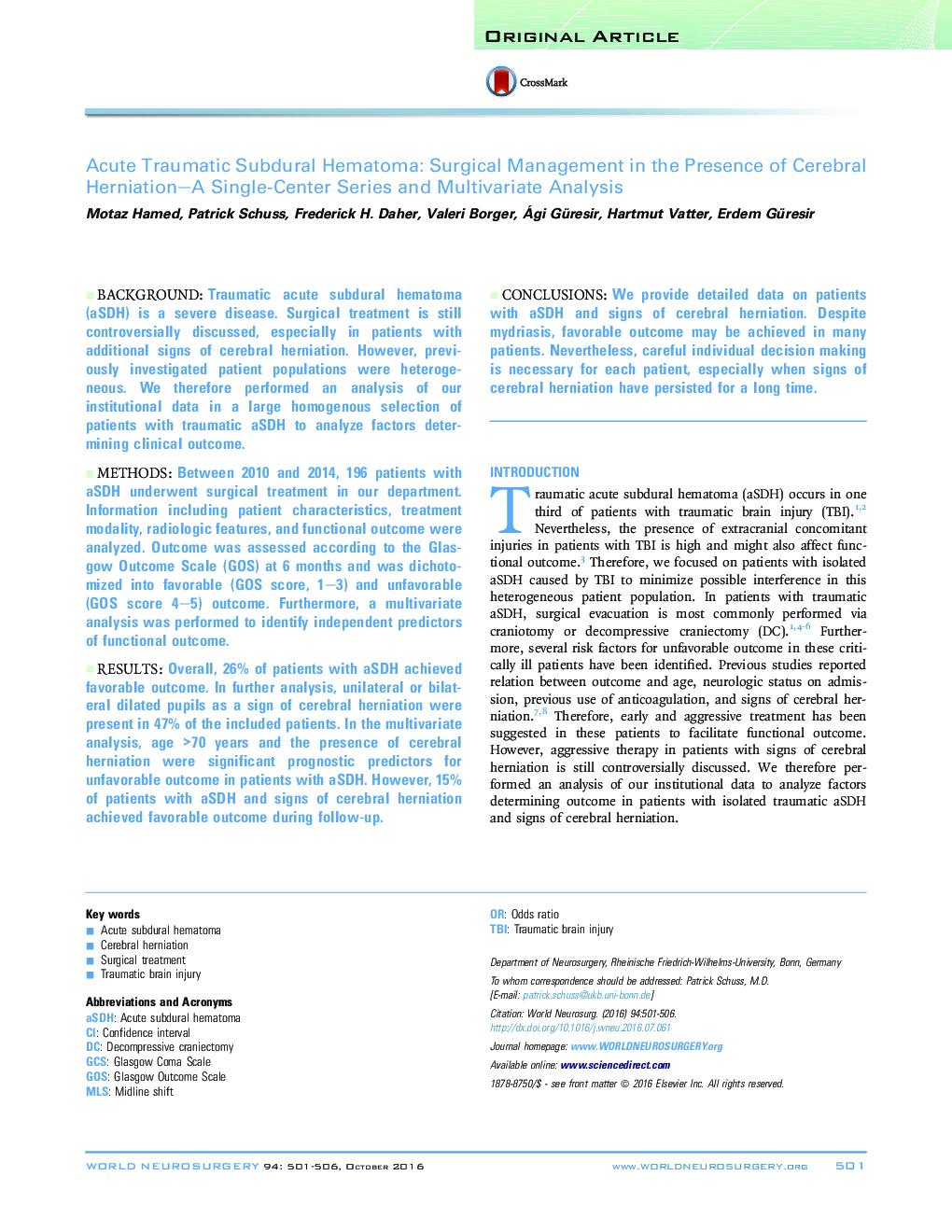| Article ID | Journal | Published Year | Pages | File Type |
|---|---|---|---|---|
| 3094638 | World Neurosurgery | 2016 | 6 Pages |
BackgroundTraumatic acute subdural hematoma (aSDH) is a severe disease. Surgical treatment is still controversially discussed, especially in patients with additional signs of cerebral herniation. However, previously investigated patient populations were heterogeneous. We therefore performed an analysis of our institutional data in a large homogenous selection of patients with traumatic aSDH to analyze factors determining clinical outcome.MethodsBetween 2010 and 2014, 196 patients with aSDH underwent surgical treatment in our department. Information including patient characteristics, treatment modality, radiologic features, and functional outcome were analyzed. Outcome was assessed according to the Glasgow Outcome Scale (GOS) at 6 months and was dichotomized into favorable (GOS score, 1–3) and unfavorable (GOS score 4–5) outcome. Furthermore, a multivariate analysis was performed to identify independent predictors of functional outcome.ResultsOverall, 26% of patients with aSDH achieved favorable outcome. In further analysis, unilateral or bilateral dilated pupils as a sign of cerebral herniation were present in 47% of the included patients. In the multivariate analysis, age >70 years and the presence of cerebral herniation were significant prognostic predictors for unfavorable outcome in patients with aSDH. However, 15% of patients with aSDH and signs of cerebral herniation achieved favorable outcome during follow-up.ConclusionsWe provide detailed data on patients with aSDH and signs of cerebral herniation. Despite mydriasis, favorable outcome may be achieved in many patients. Nevertheless, careful individual decision making is necessary for each patient, especially when signs of cerebral herniation have persisted for a long time.
